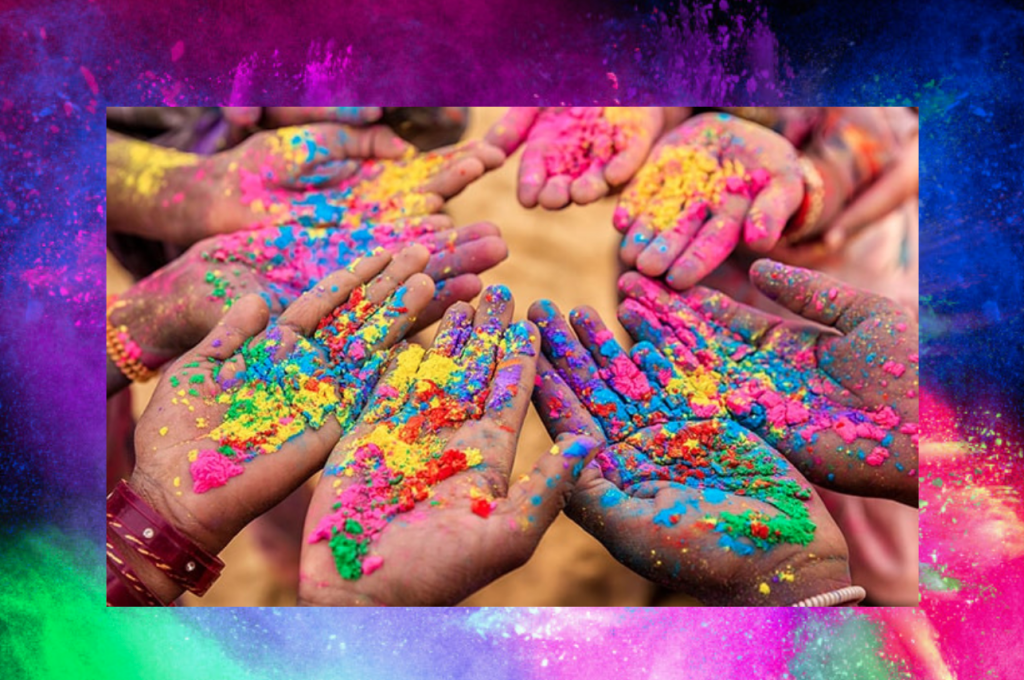Holi is a holiday that has been celebrated for centuries throughout India’s history. It is a day to celebrate the victory of good over evil and the welcoming of spring. People forget their animosities towards others and instead, celebrate with neighbors, friends, and family. It’s a time for everyone to experience a fresh start.
On the eve of Holi, people gather around a bonfire singing and chanting to kick off the celebrations. The ceremony is known as Holika Dahan which symbolizes the burning of evil power characterized in the legend associated with Holi.
On the day of Holi, people gather at a common place to sing, dance and play colors. Everyone wears white and people smother everyone present with powdered colors, regardless of rich or poor, friend or foe. In the olden days, these colors, called Gulal, were made from flowers of trees such as Palash or Tesu. These flowers have a bright orange color and have also been used for medicinal purposes. Nowadays, these powders are mostly made of corn starch and rice powder, which are dyed in vibrant colors. Along with this, some people throw water balloons and drench each other in water.
There is also a tradition of visiting the houses of friends and family to wish and play color. Like most other Indian festivals, people prepare a variety of sweet and savory snacks at home and offer to the visitors. Snacks are served along with a cold sweet and spicy drink called Thandai, which has the flavor of almonds, fennel seeds, rose petals, cardamom, saffron, and poppy seeds.
A week after the district’s Spring break, the Ridgewood Indian Community celebrates and invites citizens of Ridgewood to Orchard or Ridge fields to share their celebration by throwing color and partying. Unfortunately, this big celebration did not happen last year and will not be happening this year due to the pandemic. Even then, some people may be celebrating with smaller outdoor gatherings or at home.
Shriya Dani
Staff Writer
Graphic: Preethika Rao

